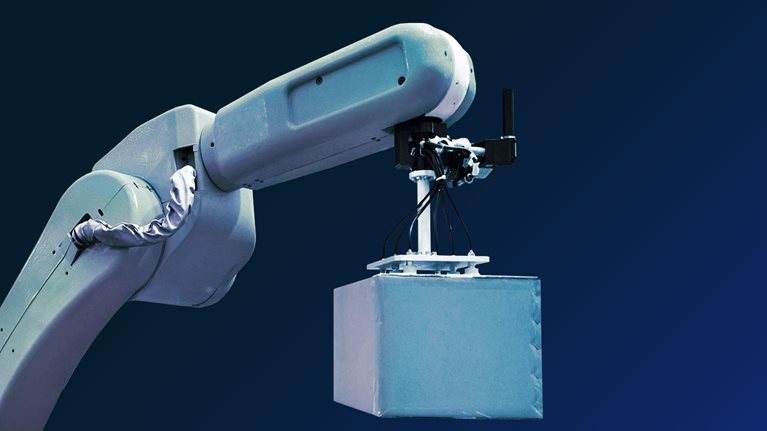The next decade or two will likely bring about the biggest disruption to work and employment since the Industrial Revolution in the 19th century. In that era, machines replaced more than half of workers in some sectors during a span of only about 30 years. This time around, the disruption could lead to even more dramatic consequences: according to research from the McKinsey Global Institute (MGI), automation and artificial intelligence (AI) could displace between 400 million and 800 million people worldwide by 2030. At the same time, new jobs will be created, but these jobs will require skills that will be in short supply.
Many industries are already feeling an acute skill mismatch. Executives say they’re unable to fill open positions that require skills in data science, digital technologies, and advanced analytics. Meanwhile, this scarce talent continues to flock to digital natives, such as Apple and Google.
For the consumer-packaged-goods (CPG) industry, the skill crunch is just around the corner, driven in part by the shift toward digital channels. Today, according to Euromonitor, less than 5 percent of CPG sales are online—but e-marketplaces like Alibaba and Amazon are growing at an astonishing 27 percent per year, compared with the 1.4 percent growth of traditional mass channels. E-marketplaces generated 70 percent of all consumer-goods sales growth between 2013 and 2018.
CPG companies must prepare for a world of work that looks very different from today’s. Most large CPG players are just starting to revamp their talent and processes to adapt to this shift and are therefore ceding most industry growth to young, digitally native start-ups. Catching up is a top strategic imperative.
What will happen to jobs?
While all industries will be affected by automation and new technologies, the intensity of the disruption won’t be uniform. Not surprisingly, industries that currently rely heavily on manual labor will see the biggest change in their employment needs, but other sectors—even those with a high level of people-facing, nonstandard work—won’t be entirely spared. As Exhibit 1 shows, the CPG sector’s need for certain types of skills will change quite dramatically by 2030.

Today, many occupations in the CPG industry involve predictable physical activity—for instance, in warehouse operations. Because such occupations have a high potential for automation, the need for physical skills will steadily decline as automation technologies become more advanced. At the same time, due to the shift to digital and online channels, technical skills—including digital expertise and data analytics—will become increasingly important. More and more jobs will also require social and emotional skills and higher-level cognitive capabilities, such as logical reasoning and creativity.
Would you like to learn more about our Consumer Packaged Goods Practice?
Jobs in the CPG industry will be affected in one of three ways:
- Certain jobs will decline. As mentioned, automation and AI will significantly reduce the need for physical and manual skills as well as basic cognitive skills. CPG companies will need fewer office-support workers, warehouse shelf stockers, and forklift operators. However, contrary to common perception, automation won’t just affect low-skilled labor. CPG companies will also experience big shifts when it comes to the collection, processing, and visualization of customer-related data—tasks that have an automation potential of 60 to 70 percent.1
- New jobs will be created. The creation of new types of work will likely offset the number of jobs lost to automation and AI. Rising demand for consumer goods could spur job creation, especially in emerging economies. Global consumption could grow by $15 trillion between 2020 and 2030, yielding 170 million to 190 million new jobs. We expect to see job growth in a range of high-skill roles, including sales representatives, managers, executives, engineers, and service workers in unpredictable environments.2 In addition, many of the newly created jobs will likely require skills that haven’t traditionally been in high demand among CPG companies—for example, data scientists, software developers, AI specialists, and experts in robot repair and maintenance. Also, if history repeats itself, 8 to 9 percent of labor demand in 2030 will be in occupations that have never existed before.3
- Most jobs will change. Partial automation—with machines complementing human labor—will become more prevalent. At least 40 percent of tasks are automatable in the majority of US occupations (Exhibit 2). Jobs with repetitive tasks will evolve so that workers spend more of their time managing and troubleshooting automated systems.

Impact across the value chain
Workforce shifts won’t be concentrated in just one function or business area. Rather, they’ll be evident along the entire value chain. Here are examples of the impact on various functions:
- Marketing. Although intuition and creativity will still play a critical role in crafting marketing messages and campaigns, data and advanced analytics are expected to underpin almost every marketing decision—including which marketing levers to pull, when, and for which customers. Key decisions about assortment, pricing, and promotion will be based less on representative consumer research or gut feeling and much more on analytics. Data-savvy marketers will work alongside data scientists and analysts to oversee fully automated data collection, integration, and consolidation, and to generate insights for refining marketing mix and budget allocations. Already, CPG companies are seeing the benefits of data analytics: one leading CPG grocery retailer, after moving to grid-based pricing and introducing a rule engine, has boosted annual margin by approximately 2 percent.
- Sales. Salespeople will continue to be in high demand, but just like tomorrow’s marketers, they’ll need to be data literate and possess analytical skills. Many routine sales processes will be automated. It’s likely that machine-learning algorithms will create salesforce-deployment plans, recommend optimal terms for supplier negotiations, and generate dashboards to help salespeople prioritize their actions.
- R&D. Innovation and product development will increasingly be driven by automated consumer feedback—for instance, through connected devices and the Internet of Things. Repetitive R&D-related tasks, such as documenting R&D protocols and procedures, will be automated. AI and 3-D printing will be regularly used in designing and testing products.4 R&D organizations will therefore need people with higher-level cognitive and technological skills. Software engineers, for example, will need expertise in algorithm development, database management, and advanced analytics.
- Supply chain. The increasing automation of supply-chain operations, from production to warehouse management to logistics, will displace traditional supply-chain personnel in favor of technically trained engineers and data scientists.5 Supply-chain planners, for instance, will need to be able to work with complex data sets and use advanced algorithms to identify and exploit demand and supply patterns.6 End-to-end experts—people who can translate supply-chain and business requirements into digital projects and then validate the proposed solutions—will be increasingly valuable. Some CPG companies are beginning to use nearshore or onshore manufacturing rather than continue to rely on offshore factories, but such moves are unlikely to bring about a large-scale revival of historical manufacturing jobs.
- Procurement. Robot-driven procurement algorithms may be able to access real-time data in global sales systems and dynamically match demand with the optimal supply. Procurement professionals will need to become adept at using advanced, digital procurement solutions, such as clean-sheeting tools, e-auctions, and procure-to-pay platforms.
- Finance, legal, and other back-office functions. MGI research concludes that 40 percent of finance activities are fully automatable, and another 17 percent are partially automatable. Leading-edge finance departments at CPG companies have begun using robotic process automation—software that performs redundant tasks efficiently and accurately. Requirements for future finance staffers might include a willingness to learn about new technologies or to develop skills related to process design that go above and beyond traditional finance tasks. The same holds true for other back-office functions, such as legal and HR, where many repetitive activities will eventually be automated.
Preparing for change
The changing workplace will require CPG companies to reevaluate their talent strategies and recalibrate their workforce needs. What concrete steps should CPG companies take? To win in the future, they must act on three fronts today (see sidebar, “Case example: A global consumer-packaged-goods company’s efforts to become fit for the future”).
Hire and retain ‘lighthouse’ talent
In a recent McKinsey study of more than 3,000 business leaders in seven countries, one in five top executives opine that they and their peers in the C-suite lack sufficient understanding of new technologies.7 Leaders who have a solid grasp of digital, big data, and analytics are needed in boardrooms and on top-management teams—as well as in every core functional and geographic cell—to advance the future-of-work agenda.
Hiring external leadership talent can help fill the gaps. One international consumer-goods company hired a senior leader from a major high-tech player as an independent director. This “lighthouse hire” built buzz for the company and made a strong statement about its commitment to digital and technological excellence, helping it attract other tech professionals. Furthermore, this move allowed the company to tap into the senior leader’s expertise and personal network.
CPG companies’ HR organizations need to develop nontraditional strategies to attract top digital talent. For instance, they can find talent by recruiting through developer communities, networking at technology meet-ups, participating in technology conferences, and incentivizing internal referrals to benefit from the networks of current employees.
That said, recruiting is only one part of the required HR effort. Retaining top talent is equally critical. To increase the chances of retaining in-demand tech talent, companies should involve them in the decision-making process for strategic decisions, give them clear opportunities for career progression, and provide salaries, benefits, and incentives that are competitive with those offered by tech companies.
Redefine job roles and requirements
As automation and AI take hold, companies will need to redefine the activities and responsibilities of each job role. The qualifications and skills that a company seeks in job candidates should evolve accordingly. For example, in many jobs, an employee’s ability to master emerging technologies quickly will be more important than an employee’s expertise in using one specific niche technology. Only the combination of skilled labor and advanced tools will ensure sustainable success.
Technological aptitude will become more important in the highest levels of the organization as well. Companies will continually update the systems and tools they already have in place, but they will also develop or acquire smart, new solutions that fully integrate new capabilities, such as big-data analytics, next-generation payment solutions, and high-end forecasting tools. Because these tech investments should align with a company’s long-term strategy, it’s essential that top management has at least a general understanding of their functionality and potential.
Reskill employees
Companies can’t rely solely on new hires to fill the skill gaps. Automation and AI will affect every function and level of the business organization, which means companies will need to equip their current employees with skills that align with the expected shifts in job profiles. Through reskilling—helping employees either deepen their existing skills or develop new ones—CPG companies can preserve their workforces, institutional knowledge, practical experience, and company cultures.
In the best cases, a reskilling effort is a partnership between a company and its employees. The company should analyze its internal skill gaps and communicate its findings clearly: Which jobs will be affected, and what skills will people in those jobs need in the future? It should then help employees acquire those skills, whether by creating new, in-house training programs or partnering with third-party training providers (such as industry associations and educational institutions). Management could consider linking transfers, promotions, and bonuses to participation in these learning programs.
Adopting automation and AI in the workplace can be both a boon and a challenge for CPG companies. There will be significant repercussions on their operations, their organizational structures, and their workforces. It’s imperative that companies begin to plan for these big shifts now. Otherwise, they’ll be unable to compete in the new world of work.


